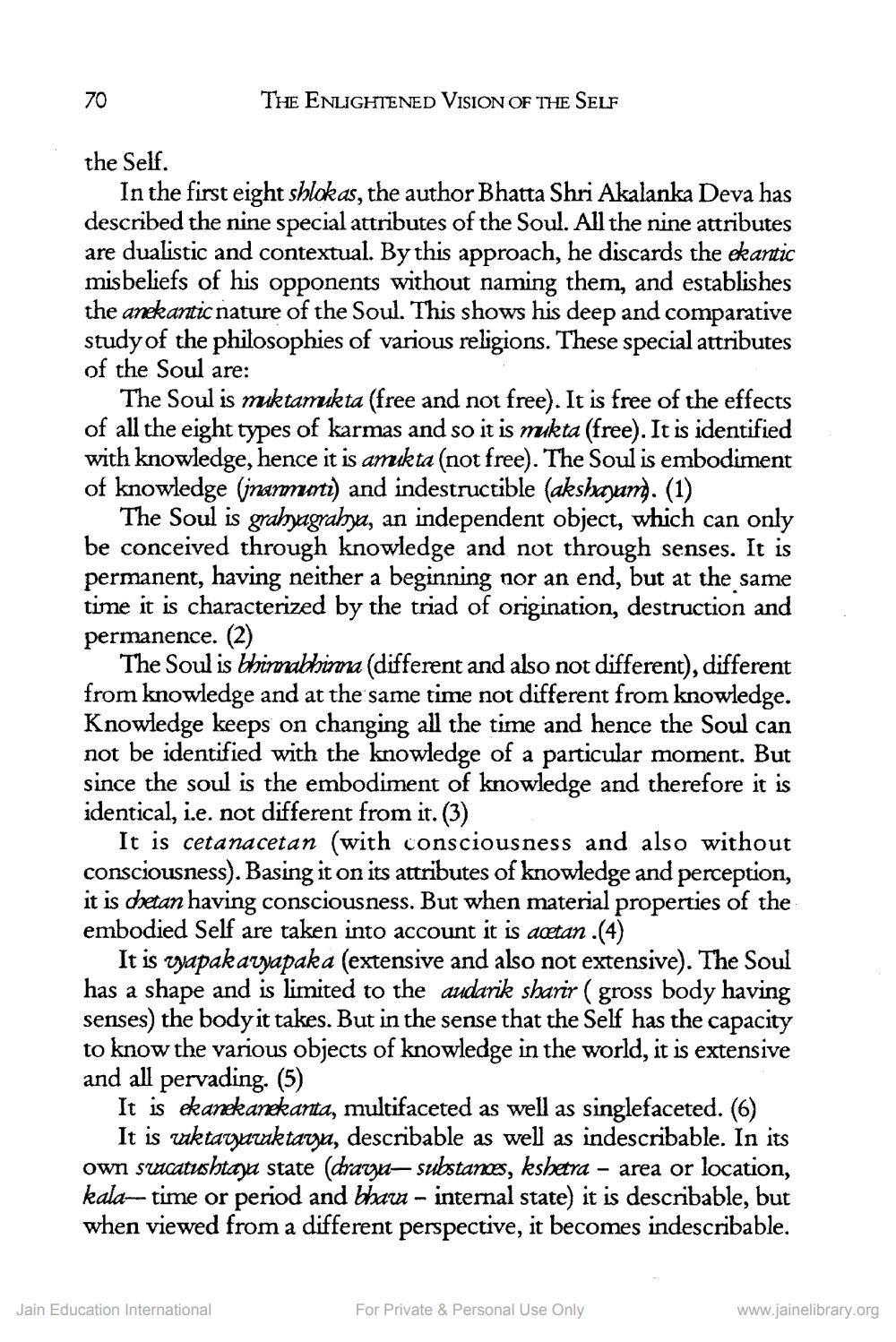________________
THE ENLIGHTENED VISION OF THE SELF
the Self.
In the first eight shlokas, the author Bhatta Shri Akalanka Deva has described the nine special attributes of the Soul. All the nine attributes are dualistic and contextual. By this approach, he discards the ekartic misbeliefs of his opponents without naming them, and establishes the anekantic nature of the Soul. This shows his deep and comparative study of the philosophies of various religions. These special attributes of the Soul are:
The Soul is muktamukta (free and not free). It is free of the effects of all the eight types of karmas and so it is mukta (free). It is identified with knowledge, hence it is amukta (not free). The Soul is embodiment of knowledge (inaromoti) and indestructible (akshasan. (1)
The Soul is grahagrahya, an independent object, which can only be conceived through knowledge and not through senses. It is permanent, having neither a beginning nor an end, but at the same time it is characterized by the triad of origination, destruction and permanence. (2)
The Soul is bhimmabhima (different and also not different), different from knowledge and at the same time not different from knowledge. Knowledge keeps on changing all the time and hence the Soul can not be identified with the knowledge of a particular moment. But since the soul is the embodiment of knowledge and therefore it is identical, i.e. not different from it. (3)
It is cetanacetan (with consciousness and also without consciousness). Basing it on its attributes of knowledge and perception, it is detan having consciousness. But when material properties of the embodied Self are taken into account it is acetan.(4)
It is vyapakaryapaka (extensive and also not extensive). The Soul has a shape and is limited to the audarik sharir ( gross body having senses) the body it takes. But in the sense that the Self has the capacity to know the various objects of knowledge in the world, it is extensive and all pervading. (5)
It is ekanekanekanta, multifaceted as well as singlefaceted. (6)
It is wktavaraktarja, describable as well as indescribable. In its own svacatushtaya state (draza, substances, kshetra – area or location, kalam time or period and bhara - internal state) it is describable, but when viewed from a different perspective, it becomes indescribable.
Jain Education International
For Private & Personal Use Only
www.jainelibrary.org




